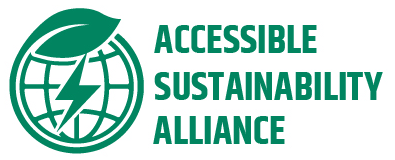If you thought solar energy was just a niche player in America’s energy mix, 2024 proved otherwise. Last year wasn’t just a win for solar—it was a full-blown revolution. Let’s unpack how sunlight became the MVP of the U.S. power grid and what this means for our clean energy future.
Solar Smashes Records: By the Numbers
2024 wasn’t just a good year for solar—it was a historic one. Here’s the breakdown:
- 32.4 gigawatts (GW) of new utility-scale solar capacity flooded the grid, enough to power 6+ million homes.
- Solar claimed a whopping 58% of all new electricity-generating capacity added in 2024, leaving wind (12%) and natural gas (25%) in the dust.
- Growth skyrocketed 51% year-over-year, proving that solar isn’t just trending—it’s transforming how America powers up.
States like Texas, California, and Florida led the charge, thanks to sun-soaked landscapes, faster permitting, and massive solar farms. But this boom wasn’t just about geography—it was fueled by policy, innovation, and a nation ready to embrace clean energy.
Why Solar Won 2024
So, what sparked this solar explosion? Three key factors:
1️⃣ The Inflation Reduction Act (IRA) Supercharger
The IRA’s tax credits turned solar projects into no-brainers for developers. Pair that with incentives for energy storage (hello, batteries!), and suddenly, solar became a reliable 24/7 power source—not just a daytime player.
2️⃣ Prices Dropped, Production Popped
Solar panel costs have plunged 40% in five years, driven by smarter tech and a homegrown manufacturing boom. The U.S. now makes 30% of its solar panels domestically, slashing reliance on imports and creating jobs coast to coast.
3️⃣ Everyone Wanted In
From corporations chasing ESG goals to homeowners cutting utility bills, solar went mainstream. Rooftop installations jumped 24% as families and businesses alike declared, “Why pay for power when the sun’s free?”
Roadblocks on the Solar Highway
Even Cinderella stories have plot twists. While 2024 was a banner year, the solar industry still faces hurdles:
- Grid congestion: Aging infrastructure struggles to handle the solar surge, causing project delays.
- Supply chain snags: Critical components (like transformers) remain stuck in bottlenecks.
- NIMBYism: Not everyone loves the sight of solar farms. Land-use debates are heating up from rural counties to state legislatures.
But here’s the kicker: Analysts say these are speed bumps, not dead ends. With smarter grid investments and policies to streamline permitting, solar’s momentum is unstoppable.
What’s Next? The Solar Decade Begins
The 2024 solar boom wasn’t a fluke—it’s a preview. Experts predict U.S. solar capacity will double by 2030, driven by:
- Tech breakthroughs: More efficient panels, cheaper batteries, and AI-driven grid management.
- Rising demand: States and corporations are doubling down on 100% clean energy pledges.
- Global momentum: As climate urgency grows, solar is now the world’s cheapest energy source—and America is finally leaning in.
The Takeaway: Solar Isn’t Coming—It’s Here
2024 proved solar isn’t a distant dream for the U.S.—it’s the workhorse of today’s energy transition. From megafarms in Texas to suburban rooftops in New Jersey, solar is rewriting the rules of power generation.
But the real lesson? Policy matters. The IRA’s incentives ignited this boom, and sustained support could turn solar into the backbone of a resilient, low-cost grid. So, whether you’re a homeowner eyeing panels, a policymaker drafting bills, or just someone who likes lower energy bills, one thing’s clear: The future is bright. Very bright.
What do you think? Is your state riding the solar wave? Drop a comment below—we’d love to hear your take on the renewable energy revolution!




